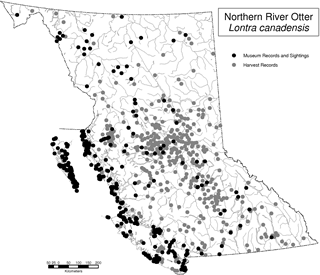River Otter
Family: Mustelidae
Photograph
© David Blevins (Photo ID #12510)
Species Information
|
Status Information
|
BC Ministry of Environment: BC Species and Ecosystems Explorer--the authoritative source for conservation information in British Columbia. |
Taxonomic and Nomenclatural Links
Additional Range and Status Information Links
Additional Photo Sources
Species References
|
Hatler, David F., David W. Nagorsen and Allison M. Beal. 2008. Carnivores of British Columbia. Royal BC Museum Handbook, Victoria. |
